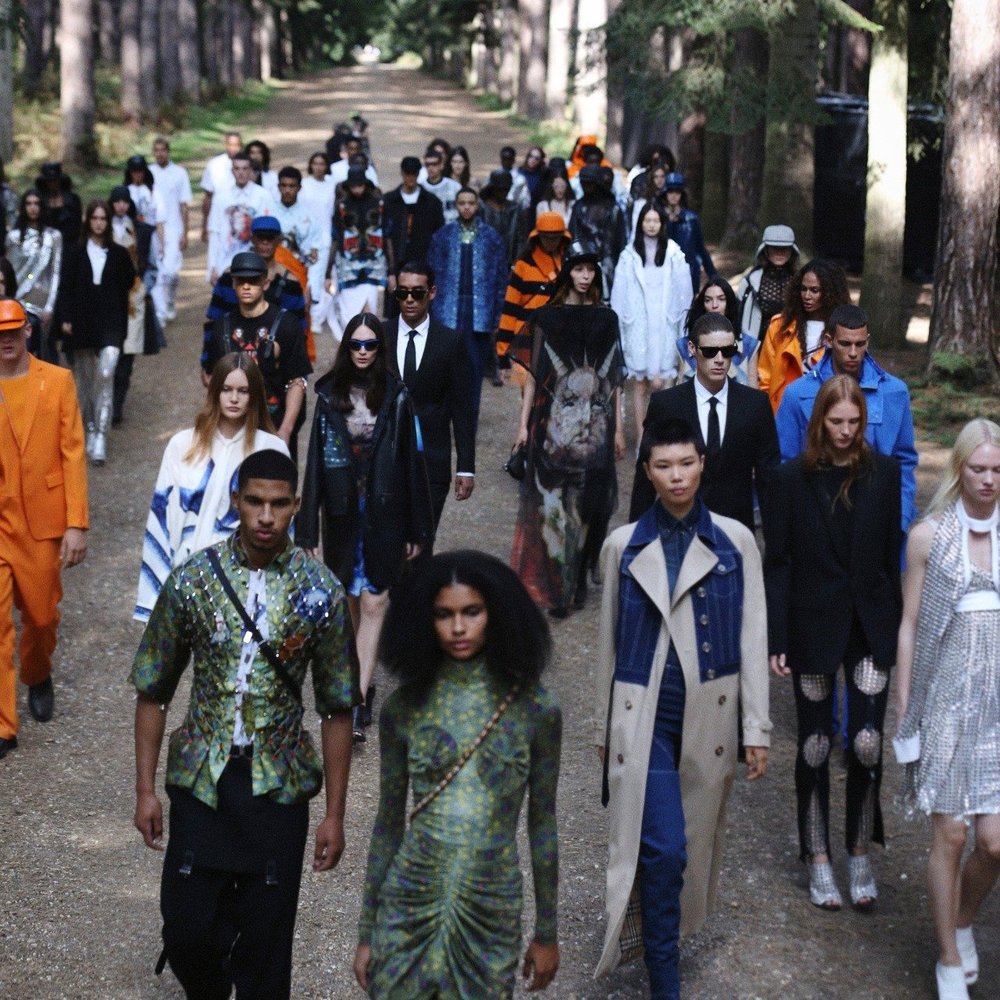May 13, 2021
The last year has been a bruising one for so many fashion companies and Burberry’s
preliminary results for FY21 on Thursday illustrated that perfectly, But they also showed how the strongest names have learned to navigate the pandemic and are bouncing back as parts of the world reopen.

In the 52 weeks to March 27, revenue fell 10% at constant currency (CCY) and 11% reported to £2.344 billion, hurt by store closures and reduced tourism. That divided down into a 30% drop in the first half as the pandemic hit it hard, but an 8% increase in H2 as it fought back. And while wholesale declined 17% in the year, it saw a good recovery in the second half.
That all meant adjusted operating profit fell 9% to £396 million and reported operating profit was up 176% to £521 million. Attributable profit rose to £376 million from £122 million.
Although the pandemic may have dominated the year, there were other things on the Burberry leadership team’s minds too as it came through the third year of its transformation programme.
It said that despite the onset of Covid-19, which led to a significant reduction in operating hours and an average of 18% of its global store network closed in the year, it “completed the objectives for the first phase of our strategy, ending FY21 with strong full-price momentum”. Importantly, this focus on reducing markdowns meant the year's comparable full-price sales rose 7%.
As well as that full-price focus, Q4 was a high point as the recovery accelerated through the year. Q4 saw comp sales rising 32% year-on-year, although they were down 5% on a two-year comparison. But with 16% of the firm’s stores closed during the period — and global tourism still weak — that was a good result. It was also encouraging that full-price sales grew 63% compare to FY20 in the quarter (or 12% versus two years ago).
The quarter clearly illustrated how certain countries and regions were in recovery mode while others lagged. Quarterly growth was driven by Mainland China, Korea and the Americas. And compared to the more ‘normal’ Q4 of two years ago, comp sales rose 17% in Asia Pacific, and 15% in the Americas, but fell 44% in EMEIA.
PRODUCT AND DIGITAL STRENGTH
For the year as a whole, the company said it saw an “excellent response to product, with growth in our strategic categories and in selling prices, [and] increasing brand strength attracting new and younger customers”.
Digital was understandably key for the business during the year and it saw “local customer traction, thanks to innovative selling formats during lockdowns” while its social retail store in Shenzhen Bay was also a major development.
In terms of brand activity, it continued to reinforce its luxury positioning through “emotive campaigns and activations and adopted a highly localised approach in every market”. That included its first locally produced campaign film for Lunar New Year in January. This had an “exceptional response from local Chinese consumers and increased the number of new fans to our WeChat page in a single month by ~15x compared to our 2020 monthly average”, it said. It didn't mention anything about the impact of China's response to its stance on Xinjiang cotton, however.
Its new collections have “resonated strongly, supporting double-digit growth in full-price sales to both new and repeat customers”. Its leather goods and outerwear returned to mid- and high-single-digit growth respectively for FY21. Strong performance in leather goods was supported by its new shapes, including the Pocket, which was the focus of its first bag campaign and programme of pop-ups earlier in the year, and the Olympia, its newest shape.
And as for the future, the company said it’s “well-positioned to embark on the next chapter of growth and acceleration” with a new phase of its transformation plan.
“In this phase, we will leverage our unique brand equity to deliver sustainable, high-quality growth and continue to drive positive change”, it said.
In terms of revenue, it wants to accelerate growth by focusing on a number of key initiatives that include rolling out its new store concept, “supercharging online sales”, and increasing its focus on full-price, including significantly reducing markdown in Mainline by the end of this financial year (FY22).

